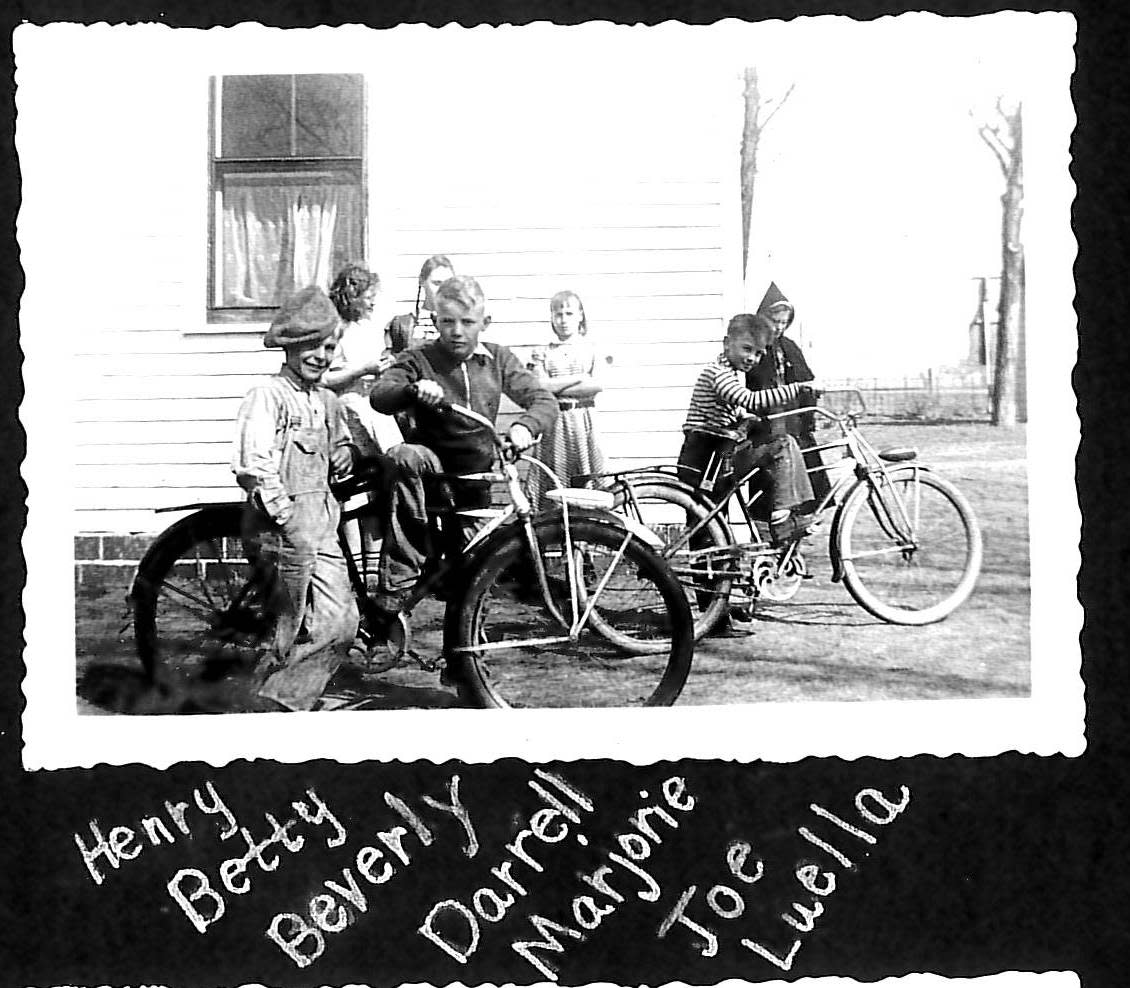Getting to school in Dallas County's Linn Township

To get to school today, students bike, ride buses, or are dropped off by their parents. Walking to school is sadly not very common now, even in towns. Early schools were built about two miles apart so those attending wouldn’t have far to walk. Sometimes, getting to school was very interesting!
If the roads were good, bicycles were a popular mode of transportation. One young girl tried riding her tricycle to school — not a good idea! To emphasize that lesson, her parents made her ride it back home. Some students rode ponies to school, which were often housed in a shed near the school building until it was time to go home. Sometimes getting a ride could provide a fun experience. Marilyn Lynch and her brother were fortunate in that they had a pony and cart that her older brother would drive to school. He would give students rides at recess, and Marilyn thought she was very popular. However, she found her popularity ebbed when her brother went off to high school and she couldn’t drive the pony. Charley Thompson recalled that there was one student who rode a cow to school — sometimes hitching it to a wagon!
For those who walked, siblings could provide interesting companions. Chuck Landon and his sisters had to walk by a cemetery to get to school, and the girls would make him walk backward behind them to make sure no ghosts came after them. Darlene Pitsenbarger and her sister would walk the rails of the railroad, challenging each other to see who could walk the farthest without falling off.
Darlene still remembers one sad event. A fellow student crossing the road after school in front of his schoolmates was hit by a car and died. Only an eighth grader, Darlene had to testify at the inquest hearing because she was a witness to the tragedy of his death.

School buses became popular with the consolidation of schools because students could no longer walk the distance. Early buses were horse-drawn, but Hazel Whitney recalls her bus riding experiences in a Model T Ford bus:
"My years at the Redfield Consolidated School were spent riding in a bus driven by a high school boy with my brother, Arnold, and my sister, Dora. There were plank benches for seats and small children sat down the middle aisle and tended to “kick” older children seated at the windows. The roads were mud—no gravel or paving—and very rough, so short legged children tended to flop around (not by choice). There were no heaters, so students wore long coats, four buckle overshoes, and long underwear and even then a blanket was often needed. Many had their pride to warm them and refused to use blankets even though parents insisted on them at times. During my twelve years of school, we did progress to a better bus with leather seats. It was a Model A no doubt, but still had no heat."
The students attending the rural schools in Linn Township would have had similar experiences. Unfortunately, other than the locations of the schools in Linn Township listed in 1875 and 1916 atlases, we haven’t uncovered any stories about the schools located there.

In an ongoing effort to preserve the history of the township schools in Dallas County, we are seeking details on the names and locations of the schools in Linn Township. If you have any information about these schools, such as their location or stories of students who attended them, our group would like to hear from you. Please contact Myrna Griffith at [email protected], Deanette Snyder at [email protected], or Sue Leslie at [email protected].
This article originally appeared on Des Moines Register: Getting to school in Dallas County's Linn Township
